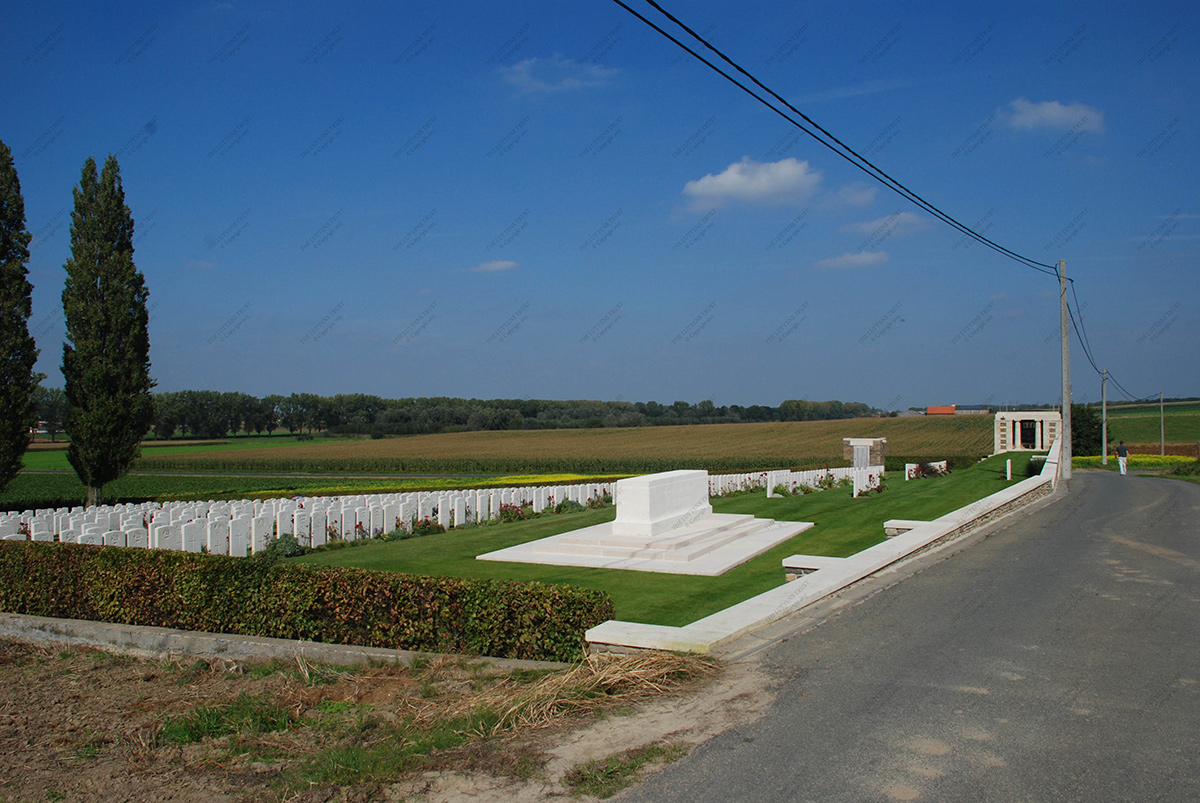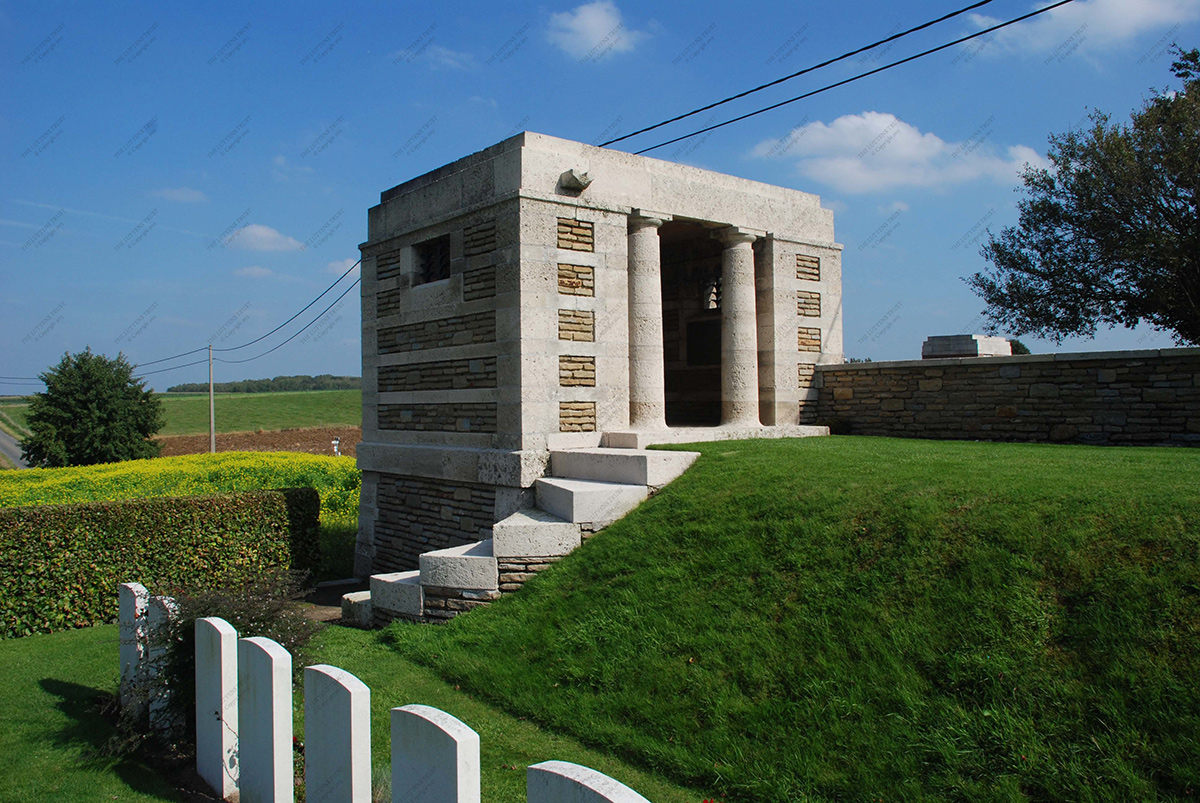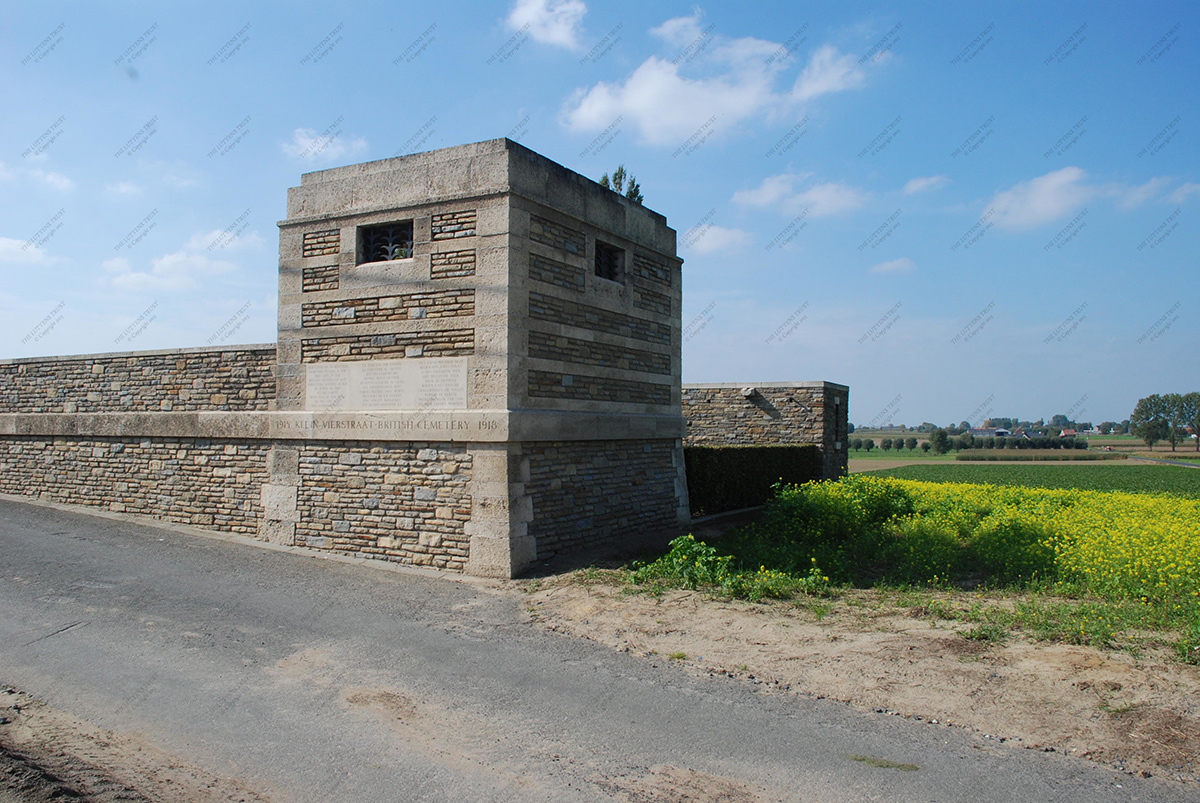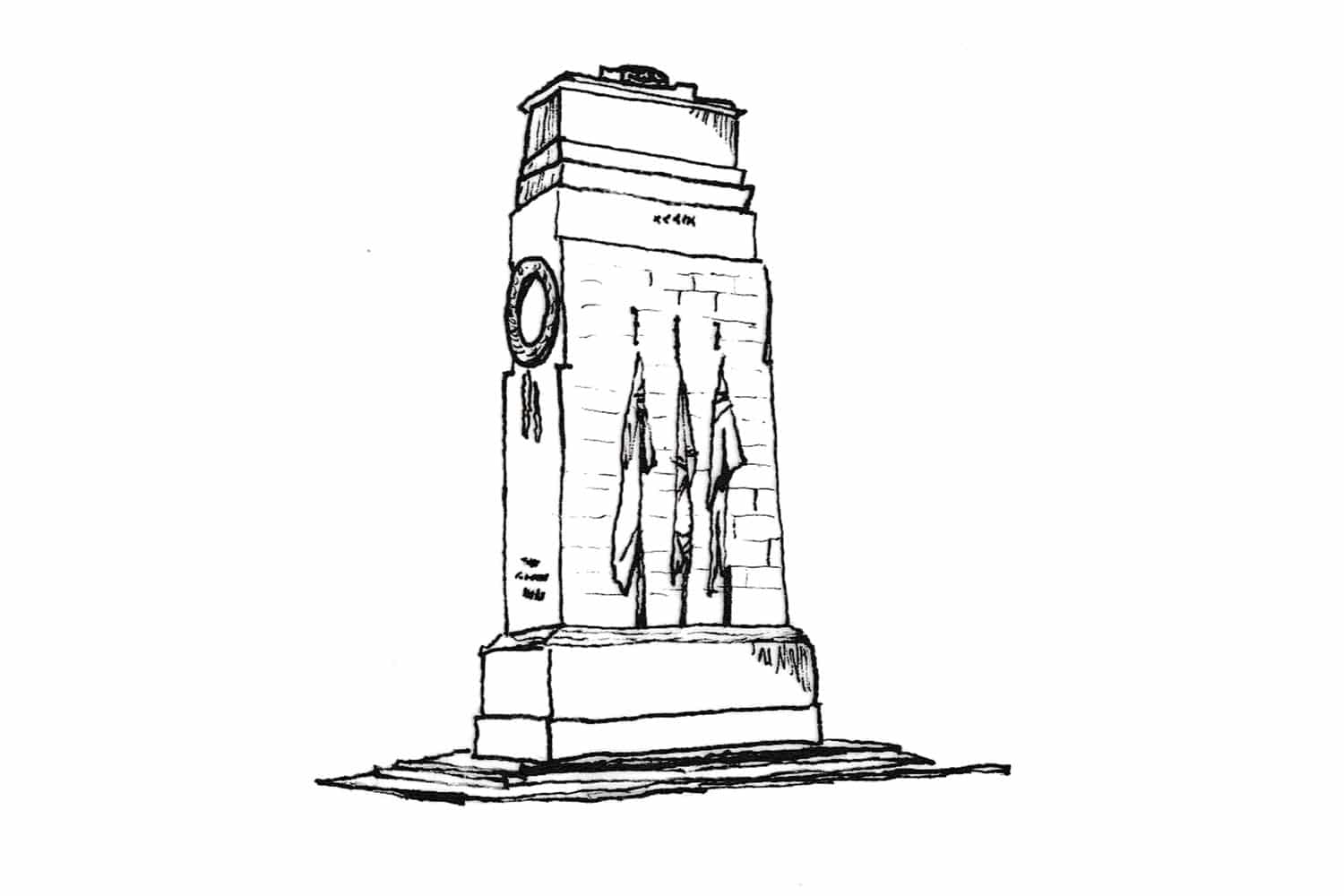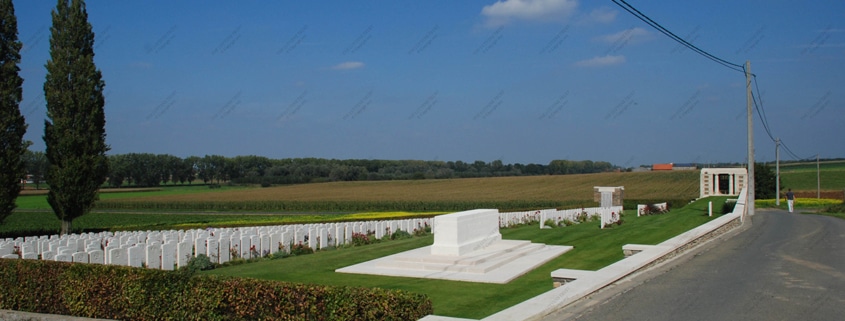
Description
The vicinity of Kemmel was the scene of heavy fighting involving the British as well as the French in April 1918. The village was in the hands of the Germans from 26 April until the end of August. The construction of the cemetery began in January 1917 and plots i, ii and iii were established by field ambulances and battle units before mid-January 1918. The construction of plot iv began in April 1918. After the war, graves from the battlefields of Dikkebus, Loker and Kemmel were transferred to plots iv to vii, along with graves from smaller cemeteries. The cemetery lies next to Kemmel No. 1 French cemetery, outside the hamlet of Vierstraat, on a side road, Molenstraat, in the direction of Kemmel. The cemetery is situated in an elevated field and can be reached by way of the side road, which leads to the higher level. The cemetery was originally designed with a pathway from the main road across the fields. The design had to be considered because the Belgians had constructed a new road along the cemetery, with a direct entrance to the cemetery. The unusually designed shelter is prominently placed on a raised part, like an advance post in the direction of Poperingsestraat. Coming from the street, the visitor first passes this building, which – sitting on a retaining wall – forms the entrance to the cemetery. From this location there is a view of the landscape of Western Flanders and at the same time the War Stone comes into sight. Looking down the valley, the visitor sees four tall poplars flanking the Cross of Sacrifice at the bottom of the slope and forming a backdrop for the cemetery. The style of the shelter is exceptional in terms of Lutyens’ work, with extremely elaborated detailing. The bars in the windows, for example, have been decoratively elaborated. Lutyens also gave instructions to his assistant Truelove: ‘The shelters want further consideration and I prefer one gargoyle if possible. The columns should have a cap to them and entasis to the shaft, the bottom part curving into the step, and the wall on either side should be thicker to work into the width of the covetto of the base. The step also wants widening and a bigger return. I have made a rough sketch on tracing paper, and have enclosed it in the plan.’ Great care was taken over the combination of the two kinds of natural stone. The short spiral staircase to the level of the slope is also exceptional. A simple toolhouse, next to the shelter, must have been added at a later stage, as it is not sketched in on the IWGC drawing. The cemetery lies on a slope. The highest level continues onward along Molenstraat, bringing forward the terrace that is thus created and which forms a whole with the shelter. This difference in elevation is evident at the little staircase near the shelter. The War Stone is also at this level, which has been dug out here in relation to the slope. The retaining wall for the terrace along Molenstraat continues onward as a retaining wall for the higher road. Basically, the cemetery has a symmetrical layout with the entrance and the Cross of Sacrifice on the central axis. The War Stone and the shelter are on either side, on two horizontal plateaus, albeit without forming a cross axis. The main greenery consists of the four poplars dominating the cemetery. They are on both sides of the Cross of Sacrifice, which has been placed in a large plant bed with shrubs. Further there are hedges bordering the cemetery on three sides.(Geurst, 2010, p.340-2)Bibliography
Geurst, J. (2010) Cemeteries of the Great War by Sir Edwin Lutyens. Rotterdam: 010 Publishers.Also Cited In
Listing Grade
Coming soonListing Reference
Client
Imperial War Graves Commission
